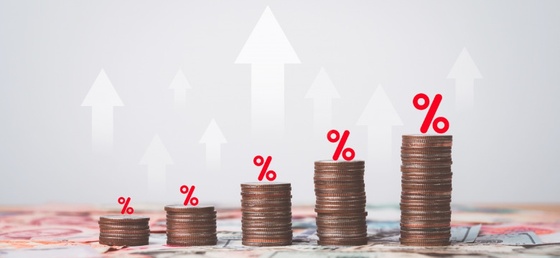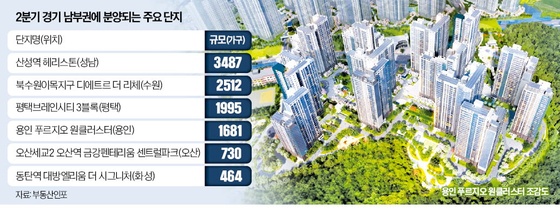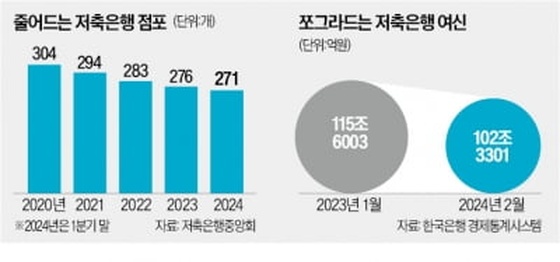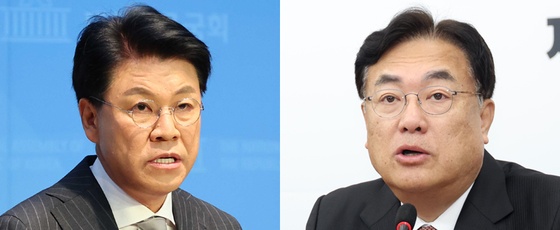입력2006.04.02 05:59
수정2006.04.02 06:00
2003년 배당수익률을 보면 한국 주식시장(KOSPI 기준)의 경우는 1.84%이고 미국 주식시장(다우존스 기준)은 2.01%이다. 이 수치는 그리 매력적으로 보이지는 않는다. 실제 많은 투자자들이 배당을 중요하게 생각지 않으며,주가상승에 따른 차익을 주식투자의 중요한 수익원으로 여기기 때문이다. 그러나 배당의 중요성은 과소평가돼선 안된다. 지난 50년동안 미 주식시장 전체수익의 3분의 2가 배당과 배당의 재투자로 이뤄졌으며,1950년대까지는 배당수익률이 국채수익률보다 높았다. 재무관련 교재들도 투자자들의 현금수입 욕구를 당연시여겼고 이에따라 기업들은 수익의 상당부분을 현금배당으로 지불했다.
1960년대에 유력한 개념으로 등장한 차익거래를 중심으로 새로운 금융이론이 발전하기 시작했다. 노벨수상자인 프랑코 모디글리아니와 머튼 밀러는 주식 가치를 배당정책으로 평가하는게 부적절함을 증명했다. 그들의 논증은 간단하다. 투자자들이 배당을 선호함에도 불구하고 기업이 배당을 하지 않는다면 투자자들은 주식의 일부를 팔아 각자의 선호에 따라 현금흐름을 발생시켜 직접 배당을 할 것이다. 반대로 투자자들이 배당을 원하지 않는 가운데 기업이 배당을 지급하는 경우라면 투자자들은 배당을 재투자해 추가로 주식을 매입할 것이다. 따라서 기업의 실제 배당정책으로 주식 가치를 평가하는 것은 부적절하다. 주식 가치는 배당지급 여부에 대한 실제 결정이 아니라 기업의 수익성과 배당지급 능력에 의해 결정되는 것이다.
물론 이러한 평가 방법은 세금과 거래비용이 없으며 정보공유가 충분히 이뤄지는 효율적인 시장이라는 조건하에서 적용된다.
실제 많은 나라의 세금제도는 비과세이거나 낮은 세율을 적용시키는 자본이득보다 배당을 불리하게 만들어 놓았다.
상황이 이렇다면 기업 입장에선 배당을 지급하지 않는 것이 더 효율적일 것이다.
미국의 과세제도가 그래 왔으며 배당에 대한 불리한 과세제도는 최근 들어서야 완화됐다.
그러나 불리한 과세제도에도 불구하고 미국 기업은 항상 배당을 지급해 왔다.
어떻게 그렇게 할 수 있었던 것일까? 정보공유가 효율적으로 이뤄지지 않는 세계에서 경영자들은 배당을 통해 기업의 실제 상태에 대한 정보를 알릴 수 있다.
배당의 증가는 기업의 개선된 전망을 의미하는 것이다.
만약 경영자가 지속할 수 없는 높은 배당금으로 투자자들을 속이려 한다면 결국 그 기업은 파산에 이르게 될 것이므로 배당은 신뢰할 만한 지수다.
이 해석은 이론적이며 그럴 듯하다.
그러나 배당의 중요성에 대해 더 설득력있는 이유가 있다.
"손 안의 참새가 지붕위 비둘기보다 낫다"라는 오래된 속담에도 있듯이 1달러의 가치는 기업 금고내에 있는 것보다 주주의 수중에 있을 때 그 가치가 더 크다.
왜 그럴까? 기업이 현금을 보유하게 되면 경영진은 이를 어떻게 사용할지 결정할 수 있는데 성공적이지 못한 투자로 낭비할 수도 있으며 자회사의 손실을 보전하기 위해 이용할수도 있다.기업은 더욱 매력적인 투자처에 수익을 재투자함으로써 주주 가치를 높일 수 있기 때문에 높은 배당을 지급하지 않는게 오히려 주주들에게 더 유리하다고 주장한다.
불행히도 역사적으로 기업은 자신의 투자기회를 과대평가하는 경향이 있으며 실제로 수익성 없는 과잉투자를 통해 주주의 돈을 낭비하는 사례를 볼 수 있다. 그렇다고 배당지급이 기업들의 투자기회 포기를 의미하는 건 아니다.
기업은 주주들에게 배당을 지급하면서 동시에 증자를 통해 자금을 돌려달라고 요청할수 있다.그렇게 함으로써 주주들은 경영진의 투자정책에 찬성하는지 여부를 결정할수 있게 된다.
이런 이유로 높은 배당지급률은 건전한 기업지배구조의 조건중 주요한 항목이다. 기업들은 이를 좋아하지 않을 듯하지만 귀기울이는게 바람직하다. 그렇지 않다면 시장이 해당 주식 가치를 낮게 평가할 수 있기 때문이다. 미국기업들이 수익의 반 이상을 배당금으로 지급할 때 한국의 작년 평균 배당성향은 20%였다.'코리아 디스카운트'를 제거하기 위한 필수조건 중 하나는 이 차이를 좁히는 것이다.
--------------------------------------------------------------
[ 영어 원문 ]
Why Dividends are important The dividend yield for KOSPI is 1.84 %, for the US market it stands at 2.01 %. This does not look too exciting. In fact, many investors disregard dividends and consider stock price appreciation as the major component of stock returns. However, the importance of dividends should not be underestimated. Over the last 50 years, about two thirds of the total return of US stocks was generated by dividends and their reinvestment. Until the 1950s, dividend yields even regularly exceeded government bond yields. Finance textbooks took it for granted that investors have a desire for current income and therefore companies paid out a significant part of their earnings as cash dividends.
Then, in the 1960s modern financial theory developed around the elegant and powerful idea of arbitrage. Franco Modigliani, the later Nobel Prize winner, and Merton Miller proved that dividend policy is irrelevant for stock valuation. Their argument was very simple: If a company does not pay dividends, but investors prefer dividends, investors can sell part of their stock holdings and generate a cash flow stream according to their preference. By doing so, they are actually creating home-made dividends. On the other hand, if a company pays a dividend but an investor does not need it, the investor can reinvest the dividend and buy additional stocks.
As a result, the actual dividend policy of a company is irrelevant for its share price. The share price is determined by a company"s earnings power and its capability to pay dividends, not by the actual decision to pay dividends or not. Of course, this only holds under conditions of a perfect market: i.e. no taxes, no transaction costs and perfect information. In the real world, many countries" tax regimes actually disadvantage dividend payments compared to capital gains, which are either tax free or taxed at lower rates. If this is the case, it would be tax efficient for companies not to pay dividends at all.
The US tax system worked like that and only recently the tax disadvantage of dividends was reduced. Still, even before that US companies always paid dividends. How can that be? One explanation is that in a world of imperfect information, managers can signal information about the true status of a company through dividends.
A rise in dividends signals improved prospects of the company. This is a credible signal because, if manager just wanted to deceive investors through unsustainable high dividends, eventually the company would go bankrupt and the managers would lose their job. This sounds a bit theoretical, but still plausible. But, there is a much more powerful reason for the importance of dividends. There is an old saying that a sparrow in the hand is better than a pigeon on the roof. One dollar in the company"s coffer has a lower value than a dollar in the shareholder"s hand. Why? As long as the money stays in the company, the management can decide how to use it and might waste it for unsuccessful acquisitions or to make up losses of subsidiaries.
Companies always argue that it is in shareholders" best interest not to pay high dividends, as they can increase the value for shareholders by reinvesting profits in highly attractive investment. Unfortunately, history has proven that companies tend to overestimate their investment chances and actually often waste shareholders" money through unprofitable over-investment. In addition, dividend payments do not mean that companies have to give up investment chances. They can pay dividends and then ask shareholders to give the money back via capital increases. By doing so, shareholders have the chance to decide on their own, whether they agree with the management"s investment policy or not.
All these are reasons why higher dividend payouts are a central item on the wish list for good corporate governance. Companies might not like that, but they would better listen as otherwise the stock market will value their stocks at a discount. The average payout ratio over the last years in Korea was 20%, whereas US companies pay out more than half of their profits. One prerequisite for removing the Korea discount would be to close this gap.
![[한경에세이] "메모하세요"](https://img.hankyung.com/photo/202404/07.36042282.3.jpg)
![[데스크 칼럼] 韓제조업의 자연 소멸 막으려면](https://img.hankyung.com/photo/202404/07.14334346.3.jpg)
![[다산칼럼] 트럼프 신드롬의 '필요조건'](https://img.hankyung.com/photo/202404/07.14315256.3.jpg)










![MBC '뉴스데스크' 앵커 출신 박혜진, 파격 근황 봤더니 [이일내일]](https://timg.hankyung.com/t/560x0/photo/202404/01.36513659.3.jpg)